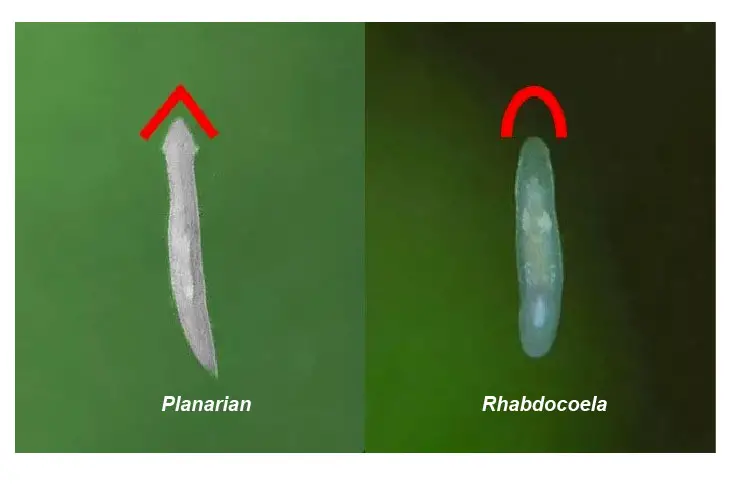Rhabdocoela Vs Planaria
Underwater creatures are mesmerizing to watch, but when it comes to rhabdocoela vs planaria, things can become confusing. Have you ever wondered what the difference between these two is? How do they differ in terms of appearance, behaviors, and habitat? In this post, we will explore rhabdocoela vs planaria, and shed light on some interesting facts about these fascinating creatures.
Pain Points of Rhabdocoela vs Planaria
For aquarists and fish enthusiasts alike, rhabdocoela and planaria can pose a significant challenge. Due to their similar appearance and behavior, it can be challenging to distinguish between the two. Furthermore, these creatures can be detrimental to both fish and their tank's ecosystem. Rhabdocoela and planaria can quickly overpopulate, leading to poor water quality and reduced fish health.
The Target of Rhabdocoela vs Planaria
If you're an aquarium owner, you've probably encountered tiny flatworms that move like inchworms at some point, making you wonder whether they're rhabdocoela or planaria. Planarians are usually larger and have a more significant impact on water quality in comparison to rhabdocoela. On the other hand, rhabdocoela are far more challenging to observe due to their small size. These creatures feast on dead organic matter, so they are a natural part of the aquatic ecosystem.
Summary of the Article's Main Points
In summary, rhabdocoela vs planaria can be tough to distinguish, but it is essential to do so. If you have a freshwater aquarium, you are likely to come across these creatures. They can harm your fish and reduce water quality. Planarians and rhabdocoela are flatworms with minor differences, and identifying them can help you maintain your aquarium's health.
The Target and My Personal Experience with Rhabdocoela vs Planaria
In my experience, distinguishing rhabdocoela vs planaria is often challenging as they look remarkably similar. However, my aquarium had become overrun by tiny flatworms that looked like inchworms, and it became clear that they were rapidly multiplying. After researching the matter, I realized that the flatworms in my aquarium were, in fact, planaria. After a thorough cleaning and water change, I was able to eradicate them, and the aquarium's natural ecosystem was on the path to recovery.

The Target and My Personal Experience with Rhabdocoela vs Planaria 2
Similarly, I have encountered tiny flatworms that were not detrimental to my aquarium's ecosystem, but instead played an essential role in organic matter decomposition. I learned that these flatworms were rhabdocoela, and that they are a natural part of any aquarium's ecosystem. Knowing the difference between planaria and rhabdocoela can allow one to intervene when necessary and let nature take its course when not.

Rhabdocoela vs Planaria in More Detail
Rhabdocoela and planaria are both considered flatworms, but the difference between the two lies in their lifestyles. Planaria are carnivores, preying on small aquatic organisms such as crustaceans, snails, and fish eggs. They have mouthparts that allow them to eat other living creatures. Rhabdocoela, on the other hand, primarily feed on decomposing organic matter.

Rhabdocoela vs Planaria in Even More Detail
Planaria possess a unique ability to heal wounds and regrow missing body parts, making them a popular research subject. They are hermaphrodites, so they do not require a partner to reproduce. They can reproduce by laying eggs or dividing their body into two parts, with each part growing into a new worm. Rhabdocoela often have a small size, with an average length of 0.5cm to about 1cm. They are hermaphrodites and fertilize their eggs internally. They reproduce frequently and have proved to be vital in maintaining the health of the aquatic ecosystem.
Question and Answer About Rhabdocoela vs Planaria
Can Planaria Harm Fish?
Yes, planaria can harm fish, especially when they are overpopulated. Planaria are carnivorous and often prey on small aquatic organisms such as fish eggs and larvae.
Can Rhabdocoela Harm My Aquarium?
No, rhabdocoela does not harm the aquatic ecosystem. Instead, they play a vital role in the organic matter decomposition process.
What is The Best Way to Control Planaria in My Aquarium?
Prevention is the best way to control planaria in your aquarium. Ensure proper maintenance, feeding, and tank cleanliness. In case of an infestation, a water change, thorough cleaning, and introduction of a suitable predator may help control the planaria population.
What is The Difference Between Planaria and Rhabdocoela?
Planaria are carnivorous and have mouthparts that allow them to prey on small aquatic organisms. On the other hand, rhabdocoela mainly feeds on decomposing organic matter and is an essential part of the aquatic ecosystem.
Conclusion of Rhabdocoela vs Planaria
In conclusion, Rhabdocoela vs Planaria may not seem like a significant issue until it becomes an alarming infestation. It is critical to differentiate between these two worm-like creatures and understand how to maintain a healthy aquatic ecosystem. Remember that while both are flatworms, they have fundamental differences, and these differences can have significant effects on your aquarium's health.
Gallery
Planaria Or Rhabdocoela? Woke Up With Lots Of These Guys On My Glass

Photo Credit by: bing.com / planaria
Pin On Fish Tank

Photo Credit by: bing.com / planaria flatworm beestjes worm planarian aquaforum
Bekijk Onderwerp - Planaria, Wormen En Hydra. | Dieren

Photo Credit by: bing.com / planaria aquafora
Rhabdocoela Or Planarian? : Shrimptank

Photo Credit by: bing.com /
Planarian – Biology, Classification, Characteristics, And Regeneration

Photo Credit by: bing.com /